Len Deighton’s Action Cookbook (1965) began life as cookery strips (aka ‘cookstrips’) when Leighton was a student at London’s Royal Academy and St Martin’s art school, and living with classmate Bob Hyde. Aimed at “an audience of men unskilled at knowing their way around the kitchen” and who want to pull the birds, the cookstrips were first published in the Observer newspaper, along with additional information and notes.
Its success led to a second Deighton cookbook, Ou Est le Garlic? (1966), Basic French Cooking (1979), ABC of French Food and Basic French Cookery Course.
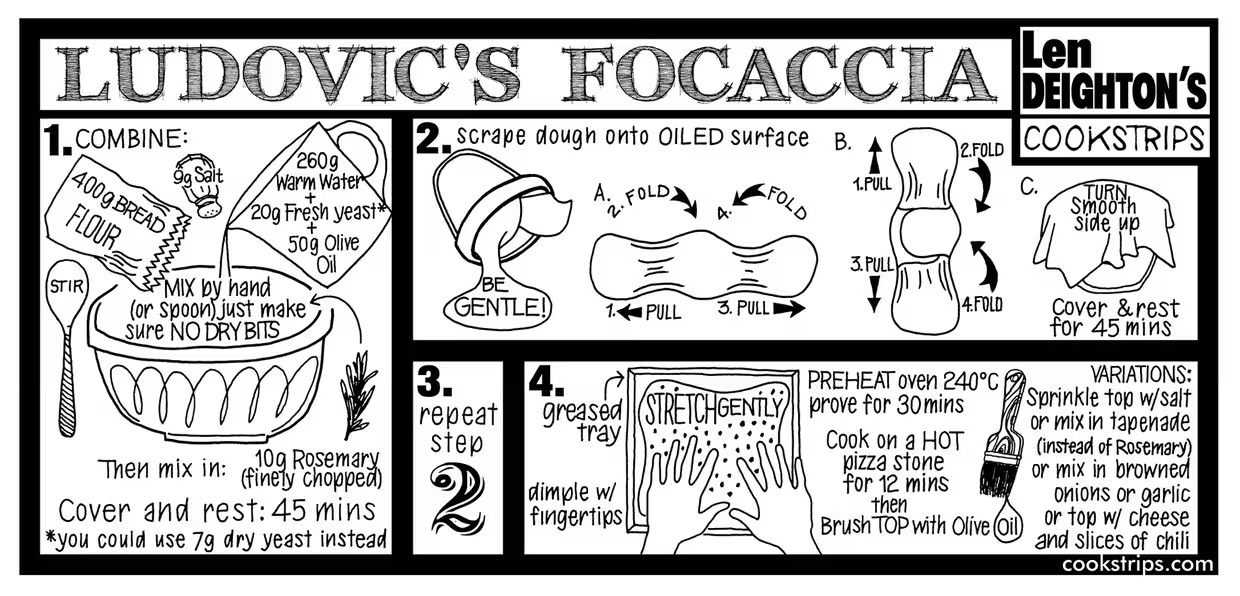
How to Seduce Someone With an Omelette
Leighton, who before turning to writing thrillers worked in professional kitchens and as a graphic designer, did the artwork for the likes of minestrone soup, sole bercy, boeuf bourguignon and chicken paprika. And by way way of a neat tie-in between his two successful careers – he designed the cover for the first UK edition of Jack Kerouac’s On the Road (1957) – one of the cookstrips is seen pinned up the unnamed spy hero’s kitchen in the 1965 film of his 1962 novel The IPCRESS File, in which Michael Caine played the lead.

Deighton and Caine in the kitchen on the set of the Ipcress File
The scene in which Caine cook’s an omelette (it’s Deighton not Caine who can be seen breaking two eggs into the bowl with one hand) while his latest “girl” pours two stiff drinks might not happened had the Hollywood executive who sent the following telegram got their way: “Dump Caine’s spectacles and make the girl cook the meal. He is coming across as a homosexual.”
Another scene from the film, shot in a supermarket, features the exchange:
Colonel Ross: Champignons? You’re paying ten pence more for a fancy French label. If you want button mushrooms they’re better value on the next shelf.
Harry Palmer (Caine): It’s not just the label sir, these do have better flavour.
Colonel Ross: Of course, you’re quite the gourmet, aren’t you Palmer?
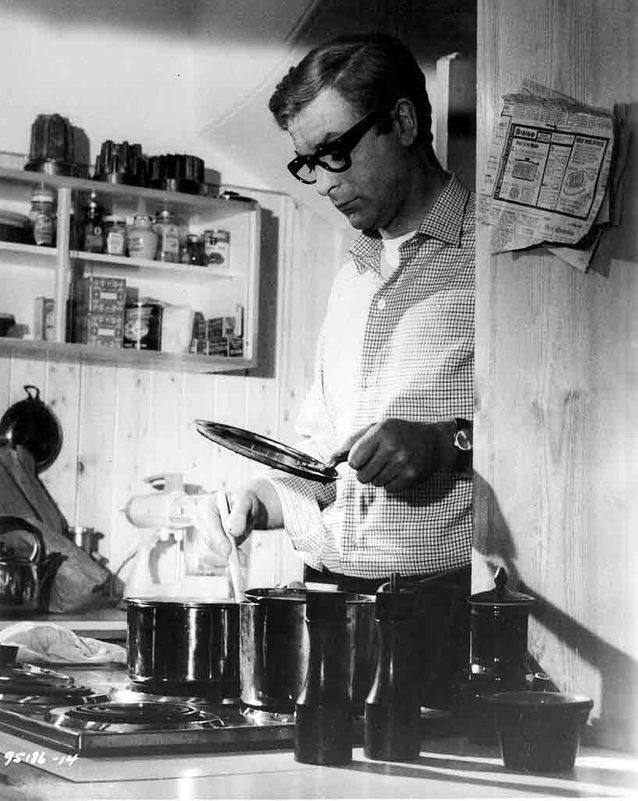
The cookstrip on the wall of Harry Palmer’s kitchen in the Ipcress File
Liquid Dinners
By way of drinks to accompany the food (or is it the other way around?), Deighton recommends the cocktail party should feature half a 70 cl bottle (35 cl) of hard spirit per person every two hours of a party, increasing to three-quarters (52.5 cl) of a bottle per person after 2 hours “since drinking will increase if they haven’t gone home by then”.
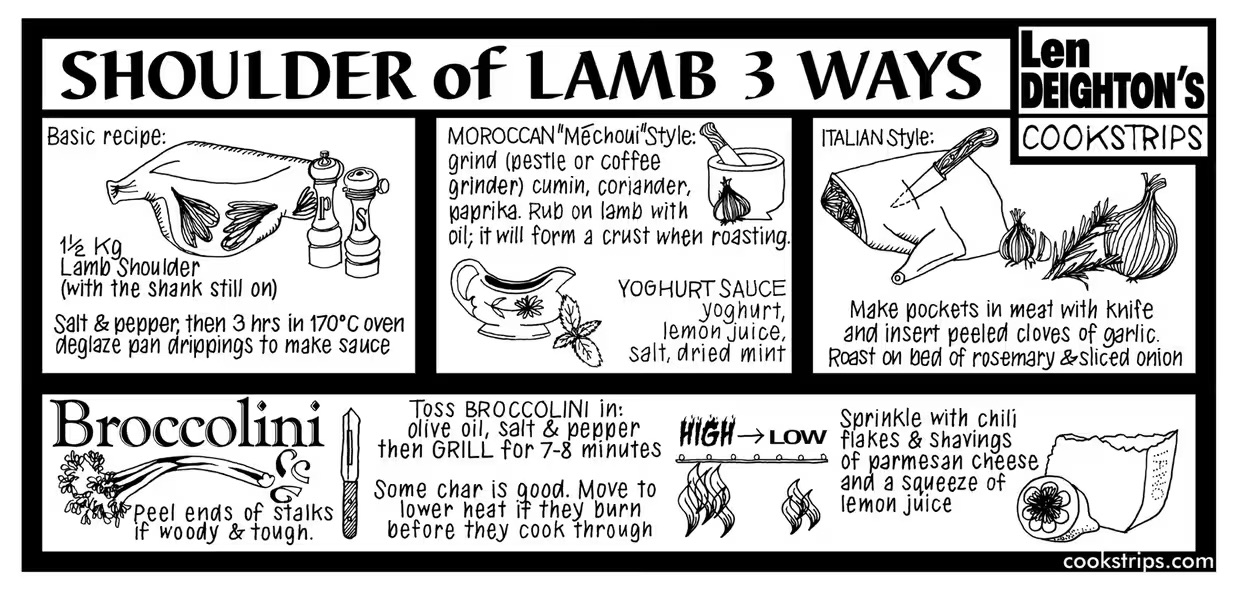
“I was buying expensive cookbooks. I’m very messy, and didn’t want to take them into the kitchen. So I wrote out the recipes on paper, and it was easier for me to draw three eggs than write ‘three eggs’. So I drew three eggs, then put in an arrow. For me it was a natural way to work.”
– Len Deighton
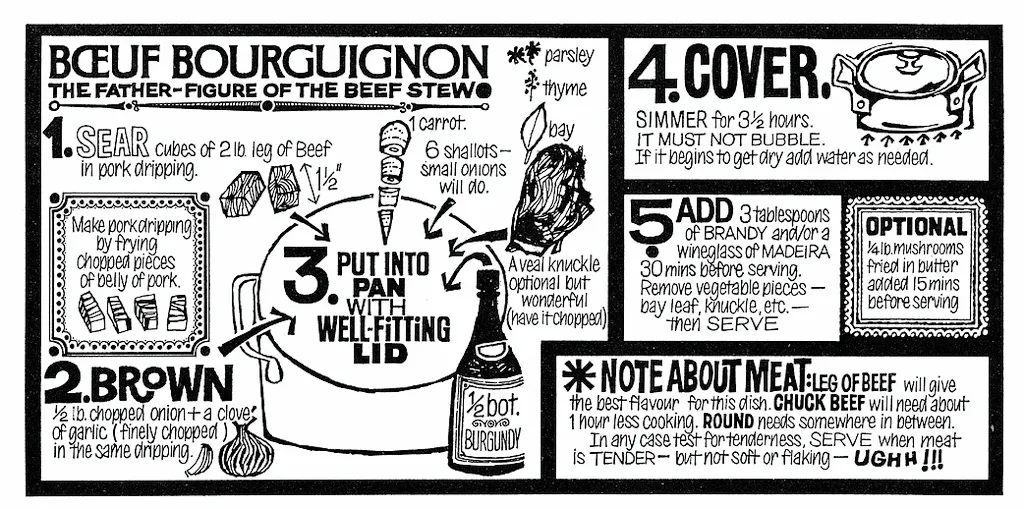
‘All meat contains moisture, and the retention of this moisture means the retention of flavour. When meat is heated it shrinks in bulk. This means that it can no longer hold the same moisture-content and the moisture escapes. The object of a cook must be to minimise this escape.
‘The simplest way of cooking meat is to put it in the oven, where radiant heat dries the moisture as it comes to the surface of the meat. Everyone appreciates and prefers the outside juice-encrusted slices. Similarly, grilling will bring moisture to the surface. Many cooks prefer to sprinkle the outside of meat with flour in order that these juices should dry rather than drip to the bottom of the pan.’
– Len Deighton’s Action Cookbook
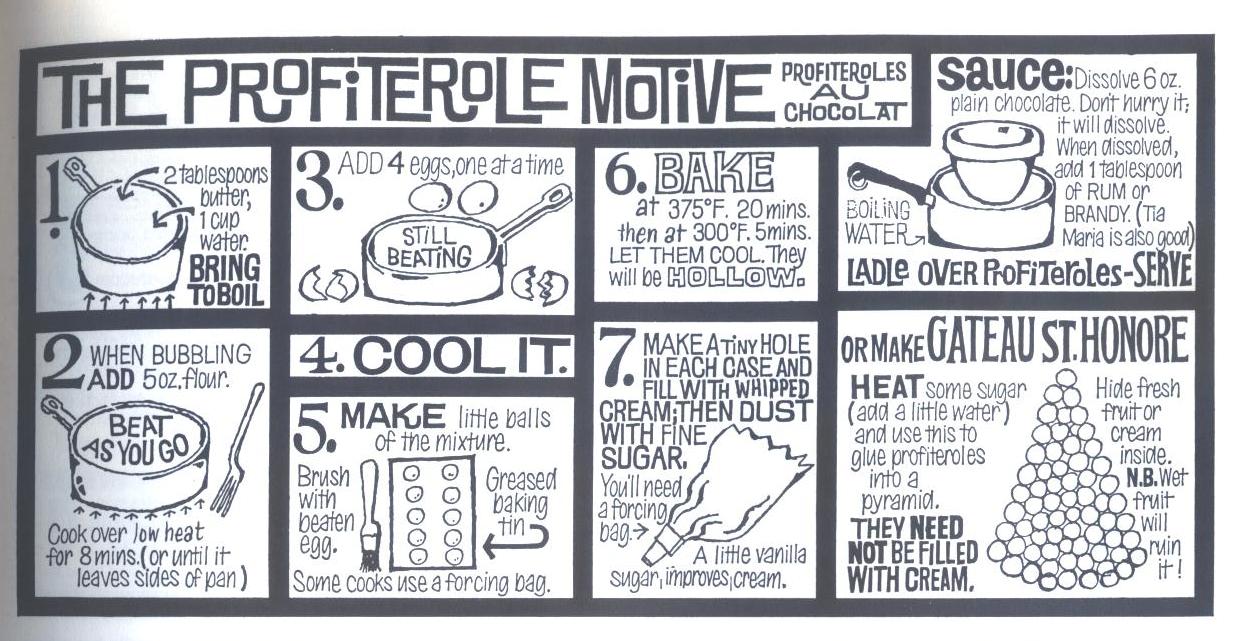

Deighton did his research, befriending the chefs at London’s Trattoria Terrazza (in Billion Dollar Brain (1967), Deighton’s lead heads there for ‘Tagliatelle alla carbonara, osso buco, coffee’) and calling on his experience working in restaurant kitchens in London and Paris:
“I was an art student on vacation, and got a job at the new Festival Hall’s restaurant as a temporary kitchen porter. One day I was mopping the floor when the fish chef asked me if I would do some jobs for him, as his assistant hadn’t arrived. My first task was skinning Dover soles. I must have been a good student because he then showed me how to fillet them. From then onwards, my days were spent as unofficial assistant to the fish chef, though I was still paid only porter’s wages. I once asked my chef why he’d chosen me for this sudden elevation. He said everyone had noticed the way I ‘hung around watching the cooks’. He was right. During my student vacations, I continued to work in kitchens in England and abroad, and I not only hung around watching the cooks, I became one of them.”
– Len Deighton, interview with John Walsh in the Independent (23 Oct 2011).
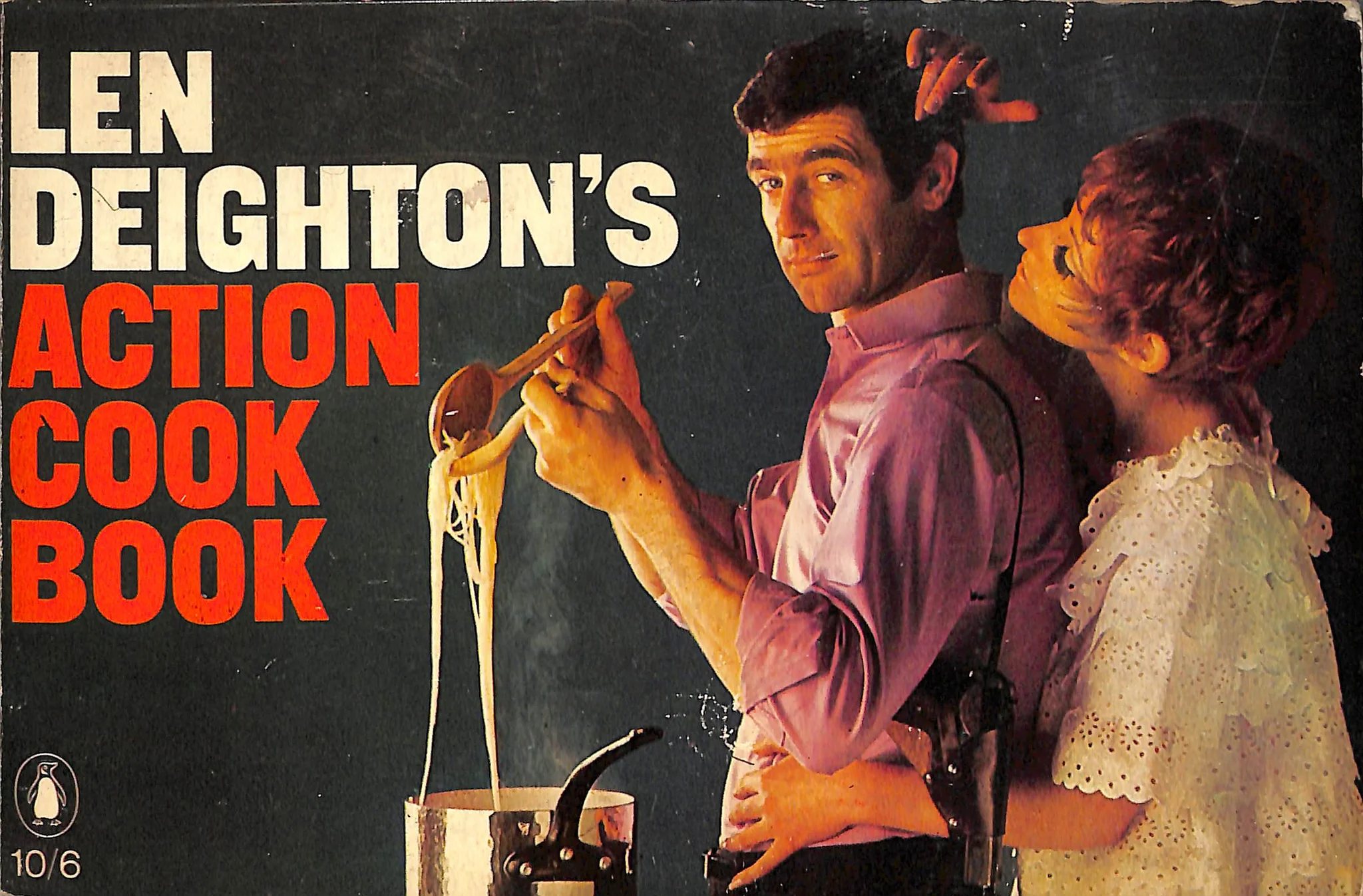
Would you like to support Flashbak?
Please consider making a donation to our site. We don't want to rely on ads to bring you the best of visual culture. You can also support us by signing up to our Mailing List. And you can also follow us on Facebook, Instagram and Twitter. For great art and culture delivered to your door, visit our shop.








